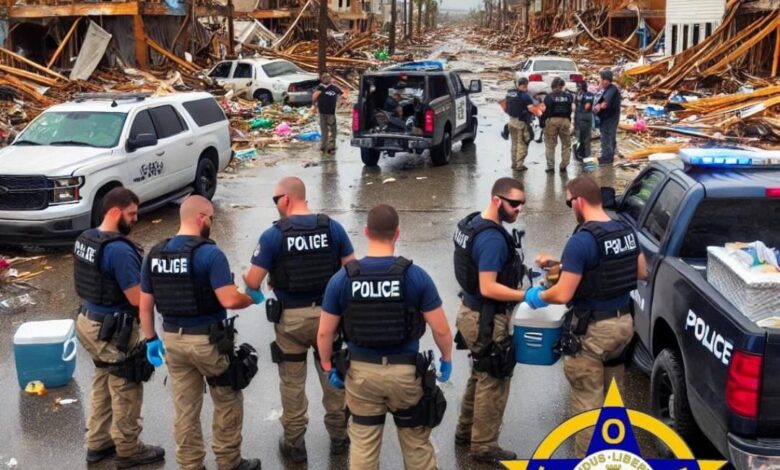Will Trump Change National Crime Statistics? Are We Getting Accurate Crime Data?

The practice of manipulating crime statistics is not new, and it is a concern that continues to be raised today. Some doubt the accuracy of the crime data reported by cities, suggesting that they may be underreporting or misrepresenting the true extent of crime within their jurisdictions. This raises the question of whether cities are offering accurate crime statistics or if there is a larger issue at play.
Analyst Jeff Asher has pointed out that crimes reported to law enforcement are dropping considerably in cities and states. This may seem like positive news on the surface, but there are many who are skeptical of these reported decreases. In cities like Baltimore, where crime has been a longstanding issue, the news of no longer being among the most dangerous cities in the country was met with skepticism and concern by residents.
Despite the reported decreases in crime, the perception of danger or disorder remains in many cities. The fear of crime is at an all-time high, according to Gallup, indicating that the reported crime statistics may not accurately reflect the reality on the ground. It is possible that cities are not reporting all the crime data they collect, leading to a skewed understanding of the true crime rates.
On the other hand, there are reports of significant drops in crimes reported through police crime dashboards, indicating that there may be genuine progress being made in reducing crime in some areas. Homicides are down, which is often seen as a bellwether for overall crime rates. However, the complexity of crime statistics cannot be understated, and it is essential to consider multiple sources and perspectives when analyzing crime data.
In conclusion, the issue of accurate crime statistics in America is a complex and multifaceted one. While there are reports of decreases in reported crime in many cities, there is also skepticism and doubt surrounding the accuracy of these statistics. It is important to consider the broader context and multiple sources of data when trying to make sense of crime trends in the country. As cybercrime rates continue to rise and violence rates increase, it is clear that the issue of crime statistics is one that requires careful consideration and analysis. In the world of crime statistics, there is a significant amount of confusion and skepticism surrounding the numbers reported by cities, states, and national agencies. Chicago, one of the cities studied, has had its fair share of scrutiny when it comes to crime data. Many law enforcement officers express doubt about the accuracy of their city’s crime statistics, with some believing that the numbers do not accurately reflect the reality of crime in their communities.
When it comes to national crime statistics, the situation is equally confusing. According to the US Department of Justice’s National Crime Victimization Survey, violent crime rates have seen a significant increase of approximately 44 percent in the latest full report in 2023. This marks the largest increase in violent crime in US history. However, FBI data shows a three percent decrease in violent crime for the same period. The disparity in these numbers highlights the importance of understanding the criteria and methods used to measure crime rates.
One crucial factor to consider is the prevalence of unreported crimes. The majority of crimes, especially property crimes, are not reported to law enforcement. According to the Bureau of Justice Statistics, only 30 percent of property crimes are reported to the police. Additionally, a mere seven percent of cybercrimes are reported, further skewing the overall crime statistics.
Despite the decrease in reported crimes, fear of crime remains at record highs among Americans. This disparity between reported crime rates and public perception underscores the need for a fair and accurate measurement of crime data.
The FBI’s National Incident-Based Reporting System (NIBRS) was introduced in 1998 to improve the quality of crime data collected by law enforcement agencies. However, the reluctance of police agencies to adopt the system stems from the fact that it captures up to ten crimes per incident, potentially inflating local crime numbers. While the NIBRS provides a more detailed understanding of crime incidents, it raises questions about how this data is reflected in city and state crime reports.
The FBI’s reporting practices only include the most serious crime in national reports, despite collecting multiple crimes per incident under the NIBRS. This discrepancy means that millions of crimes are not accounted for in national crime statistics. Similarly, city and state crime dashboards typically display only the most serious crime per incident, aligning with the FBI’s reporting practices for consistency and comparison.
In conclusion, while law enforcement agencies collect comprehensive NIBRS data internally, their public crime dashboards often only display the most serious offense per incident. This approach aims to simplify the data for public consumption and maintain consistency with traditional reporting methods. However, it raises questions about the accuracy and transparency of crime statistics at the local, state, and national levels. In the United States, there is a debate over how crime data is reported and what criteria are used to determine which crimes are included in official reports. Some states, such as Arizona, Colorado, and Michigan, only include the most serious crimes in their reports, while others use data from the National Incident-Based Reporting System (NIBRS) without specifying if all NIBRS crimes are included or if only the most serious crimes from the Summary Reporting System are used.
When questioned about this issue, the FBI responded that they do not have specific criteria or guidance for cities or states regarding which crimes to include in their reports. They suggested contacting individual agencies for more information on their reporting practices.
One common practice in the criminal justice system is “charge stacking” or “overcharging,” where individuals are charged with multiple crimes in order to ensure that they are held accountable for their actions. This practice is necessary because the majority of criminal cases are resolved through plea bargains, and multiple charges can prompt defendants to accept plea deals.
National data on jail bookings show that individuals are often charged with multiple crimes when they are arrested. On average, there are four separate charges per person, indicating the widespread use of charge stacking. However, due to fragmented data systems, the true extent of charge stacking at the arrest level is not fully understood.
It is important to note that reported crime statistics represent only a small portion of total crime, and decreases in reported crime may not necessarily reflect a decrease in overall criminal activity. The National Crime Victimization Survey, which captures total crime numbers, has reported an increase in rates of violence, despite a decrease in reported crime according to the FBI.
Recent media reports from various cities across the country highlight discrepancies in crime data and perceptions. Some cities have reported significant drops in crime rates, but there are questions about the accuracy of these reports. The issue of crime remains a concern for many jurisdictions, and accurate reporting and perceptions of crime are ongoing challenges.
The debate over crime data and reporting practices has also become a political issue, with Democrats facing criticism for their handling of the crime problem. Preliminary crime reports, whether based on city crime dashboards or FBI data, have been found to be inaccurate in the past.
Overall, the issue of crime data reporting and perceptions remains complex and multifaceted, requiring continued attention and scrutiny from law enforcement agencies, policymakers, and the public. The latest reports from the National Crime Victimization Survey indicate that rates of violence are at record highs, while crimes reported to the police through the FBI show a decrease in violent crime by three percent. However, according to three different sources based on reported crime via crime dashboards, state and local counts are down considerably.
It is important to note that many additional crimes are not being made public, either through unreported crimes or by not including additional crimes collected through the National Incident-Based Reporting System. This discrepancy has led to citizen perceptions and the belief of many law enforcement officers that there are more crimes being committed than those reported through city or state crime dashboards.
The Trump administration is considering relying more heavily on crime data from the Bureau of Justice Statistics’ National Crime Victimization Survey. This data is more numerous and likely more accurate than FBI statistics, as it can geo-locate crime statistics within metropolitan areas. However, it is crucial that the specifics of what is collected and how it is collected are clearly explained to the public.
Reevaluating how national crime data is collected could provide a better understanding of crime and potential solutions. Combining FBI crimes reported to law enforcement with the National Crime Victimization Survey’s larger numbers could offer a more comprehensive picture of crime in the nation. This change would be significant but could lead to more effective strategies for addressing crime.
In conclusion, it is essential to consider alternative sources of crime data and to ensure that the collection methods are transparent and accurate. By incorporating data from the National Crime Victimization Survey alongside FBI statistics, we can gain a more comprehensive understanding of crime trends and develop more effective solutions for addressing crime in our communities.





